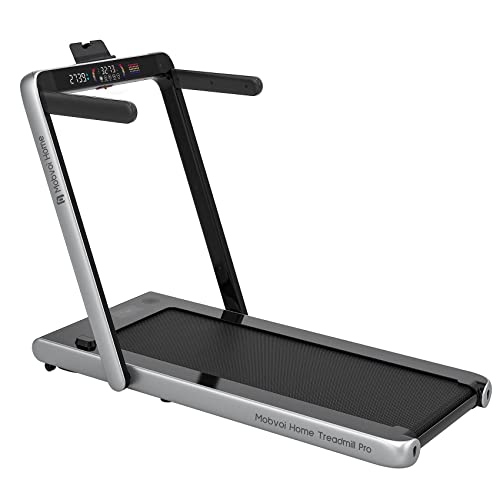Discovering the Manual Incline Treadmill: A Comprehensive Guide
As the fitness industry continuously progresses, with new gizmos and machines hitting the marketplace, one piece of equipment has remained a staple in many homes and gyms: the treadmill. Particularly, the manual incline treadmill offers a special method to cardiovascular physical fitness training. This guide digs into the functions, benefits, and factors to consider of using a manual incline treadmill.
What is a Manual Incline Treadmill?
A manual incline treadmill is a non-motorized treadmill that requires users to power their motion by walking or operating on the belt. Unlike conventional treadmills, which depend on electrical power to move the belt, manual incline treadmills depend exclusively on the user's energy. The incline setting, which can be changed, helps mimic uphill running, providing an effective workout.
Key Features of Manual Incline Treadmills
| Function | Description |
|---|---|
| Manual Operation | Users should propel the belt themselves, making it a self-paced exercise. |
| Adjustable Incline | Incline settings can be adjusted, providing differed resistance for a tougher challenge. |
| Compact Design | Often more light-weight and compact than motorized treadmills, making them much easier to keep. |
| Long lasting Construction | Usually constructed with sturdy materials, designed to withstand extensive usage. |
| Digital Display | Some models may include a basic digital screen to show time, distance, and calories burned. |
Benefits of Using a Manual Incline Treadmill
1. Enhanced Cardiovascular Fitness
The manual incline treadmill effectively raises heart rate, resulting in enhanced cardiovascular health. The incline setting needs more effort from the muscles, thereby increasing the overall exercise strength.
2. Personalized Workouts
With manual treadmills, users have full control over their rate and incline. This function permits them to customize workouts to align with physical fitness objectives, whether focusing on endurance structure or interval training.
3. Lower Operating Costs
Manual incline treadmills do not require electricity, making them a cost-efficient option to conventional treadmills. This economical element attract those looking to boost their home gym without incurring high energy expenses.
4. Engaging Full-Body Workout
Running or walking on an incline engages several muscle groups, consisting of the legs, glutes, and core. This total-body activation helps tone and strengthen the body while burning extra calories.
5. Lowered Risk of Injury
The low-impact nature of a manual incline treadmill can be less taxing on the joints compared to high-impact aerobic workouts. Nevertheless, users need to still practice great form and begin slowly to lower the threat of stress or injuries.
Considerations When Using a Manual Incline Treadmill
Safety First
While manual incline treadmills have numerous benefits, there are some safety considerations to keep in mind:
- Falling Hazard: Since users move the belt themselves, it is very important to preserve a stable pace to prevent losing balance.
- Incline Levels: Adjusting the incline during use can be tough and needs cautious attention to maintain stability.
Correct Form and Technique
To take full advantage of the advantages while minimizing the threat of injury, users must stress correct running or walking form. This includes keeping the back straight, shoulders relaxed, and arms in a natural position.
How to Choose the Right Manual Incline Treadmill
Selecting the best manual incline treadmill is vital to attaining fitness goals. Below are key factors to think about:
| Criteria | Recommendations |
|---|---|
| Weight Capacity | Guarantee the treadmill can support your weight; most have capacities varying from 250 to 400 pounds. |
| Adjustability | Try to find treadmills with multiple incline settings to offer workout variety. |
| Mobility | Consider foldable models if storage space is limited. |
| Convenience Features | Examine for non-slip surface areas and cushioned running areas to boost comfort. |
Regularly Asked Questions (FAQ)
1. How do Manual Walking Treadmill maintain a manual incline treadmill?
To maintain a manual treadmill, regularly examine the belt for wear and ensure it runs smoothly. Tidy the frame and running surface area, and examine the bolts and screws for indications of loosening.
2. Is a manual incline treadmill ideal for novices?
Yes, manual incline treadmills can be suitable for novices. Users can begin at a slow pace and slowly increase intensity. Nevertheless, it's vital to comprehend one's fitness level and start thoroughly.
3. Can I perform interval training on a manual incline treadmill?
Definitely. The adjustable incline feature enables users to develop different workouts, best for interval training. Alternate in between walking and running at various inclines to keep exercises engaging and challenging.
4. Is a manual incline treadmill quieter than a motorized one?
Yes, due to the lack of a motor, manual incline treadmills normally run more silently, making them an outstanding choice for shared areas.
5. How much space do I need for a manual incline treadmill?
Manual incline treadmills generally occupy less space than motorized models. However, users need to ensure there's adequate area for motion around the treadmill for security.
The manual incline treadmill offers a special blend of benefits and adaptability, making it an excellent choice for those looking to improve their exercise routine without relying on electrical power. From enhanced cardiovascular physical fitness to adjustable training choices, it offers a detailed method to physical fitness. By understanding its functions, benefits, and security factors to consider, users can select the ideal model and incorporate it successfully into their exercise regimen. Whether utilized in a home gym or a bigger physical fitness facility, a manual incline treadmill can be a vital tool for those concentrated on fitness.

